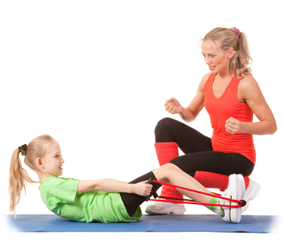
Parents do not know they can be hurting their children when youth sports push the one sport athlete concept from a very early age. Non-contact ACL* (knee) injuries for female athletes has been described as the ‘silent epidemic’ and a leading orthopedic surgeon/researcher says “it’s becoming a public health problem.” Look at what a noted author said in his book:
“The pressure to concentrate on a “best” sport before even entering middle school — and to play it year-round — is bad for all kids. They wear down the same muscle groups day after day. They have no time to rejuvenate, let alone get stronger. By playing constantly, they multiply their risks and simply give themselves too many opportunities to get hurt.”
Michael Sokolove – Author
– Warrior Girls – Protecting Our Daughters Against the Injury Epidemic in Women’s Sports
 These teen female athletes have very real challenges at puberty. See the list of challenges at by clicking here. [per independent researchers peer reviewed articles].
These teen female athletes have very real challenges at puberty. See the list of challenges at by clicking here. [per independent researchers peer reviewed articles].
Since Title IX legislation in 1972, and especially since all legal challenges were struck down by the Supreme Court approximately twenty years ago – female sports participation has exploded. Unfortunately, an unintended consequence of this terrific opportunity has been female athlete non-contact ACL injuries that cause 40,000+ surgeries annually versus 200,000+ knee injuries in the USA [3-8 times the injury rate of same-age males]. It is now estimated that 1,000,000 such injuries occur worldwide each year.
What makes this worse for the affected teen female athletes is that within 12 years, 70% of the females who are injured requiring surgery or not, will have osteoarthritis (OA) in the joint and they are more likely to injure the other knee joint.
Do I believe that females should not play sports? Absolutely not. Since 1995, I have successfully trained more than 600 teen female athletes. Every female athlete and those in cheer have all used a lower body stabilization program; what I call BNP Training. Lower body training [balance, neuromuscular control, and proprioception] will minimize the risk for injury for every female athlete while helping them be the best student-athlete each can become on and off their field of play.
Therefore, the next big step in the evolution of adolescent female athlete sports participation is pre-season lower body training (and upper body training for overhead athletes) as an integral part for developing power so they can become faster, quicker, and more agile while still looking good when they are dressed up (as this is a very important issue for the vast majority of teen females).
This training was not available for today’s parents and they have not been able to take advantage of the research that supports neuromuscular education; the training allows the central nervous system to not fatigue so each athlete can make lower body adjustments as quickly as possible.
While participating in sports always has a risk of injury, today’s parents need to rely on quality information about safe and age-appropriate training to play sports so they can make informed decisions for their daughter-athletes. Non-contact ACL injuries do not have to happen at their too high current rate.
*ACL – anterior cruciate ligament in the knee joint
– By Warren J. Potash, Specialist in Exercise Therapy and Sports Nutrition, Author: They’re Not Boys – Safely Training the Adolescent Female Athlete
